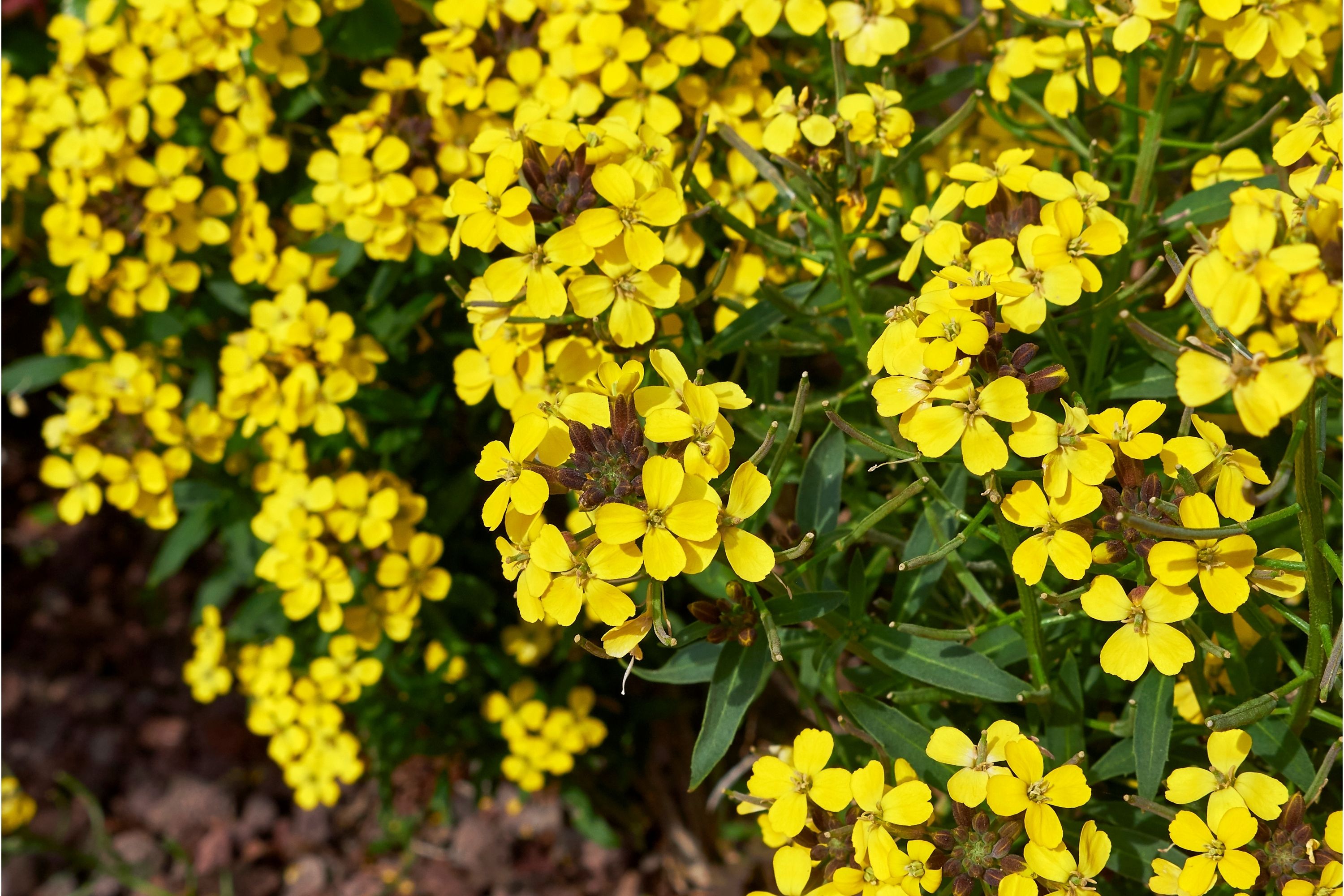Erysimum crepidifolium
(Erysimum crepidifolium)

Description
Erysimum crepidifolium, the pale wallflower, is a plant species in the crucifer family, Brassicaceae. It is a member of the genus Erysimum, which includes between 150 and 350 species in the Northern Hemisphere. Erysimum crepidifolium is an annual to short-lived perennial herbaceous plant that has upright stems, reaching a height of up to 60 cm. The leaves are hirsute, with margins ranging from dentate to entire. Flowering occurs primarily from April until July. More rarely, E. crepidifolium plants also produce flowers in the fall.The odorless flowers are relatively large, reaching lengths of 9 to 15 mm. The four petals have a pale yellow color. There are six anthers. The 20 to 70 mm seed pods are gray-green, four-sided with rounded corners, and have 3 to 5 mm stems. The species has a 2n = 14 chromosome number. Similar species E. crepidifolium is most easily confused with Erysimum odoratum Ehrh. (syn. Erysimum hieraciifolium L.), and with Erysimum marschallianum Andrz. ex DC. (E. marschallianum, itself, is cited by Malyschev and Peschkova as E. hieraciifolium) The latter, E. marschallianum, is differentiated primarily by the shape of the trichomes. Like most members of the genus Erysimum, E. crepidifolium contains both cardiac glycosides (cardenolides), and glucosinolates. All parts of E. crepidifolium are toxic due to their cardenolide content. There are at least 20 different cardenolides in the seeds, making up ~3.5% of the total mass. Among these, the most common are erysimoside (~2.3%) and its deglycosylated form helveticoside (0.5–1.2%). The highest concentrations of erysimoside and helveticoside are found during ripening and in drying seeds. Among 48 tested Erysimum species, E. crepidifolium had the highest cardenolide content in the leaves, at least three-fold higher than any of the other species. Toxicity in humans has not been reported, though mass die-offs of geese are known. Consumption of E. crepidifolium by geese leads to muscle paralysis from which the animals eventually die (hence the German common name "Gänsesterbe“, or geese death, for this species). Rabbits are also considered susceptible, but chickens are reportedly resistant to E. crepidifolium toxicity.
Taxonomic tree:







